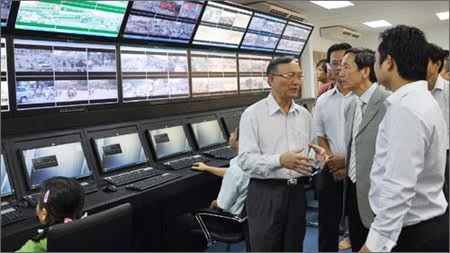(VOVworld)- On a busy “information highway”, the only way for print media and radio need to maintain their position is to adapt. The Voice of Vietnam has revamped its production, re-arranged its radio channels, and piloted HD, DAB+ and DRM broadcast technologies to keep pace with the digital era. To mark Vietnam Revolutionary Press Day, June 21, VOV Vice President Vu Hai has written a piece entitled “Mission of print media and radio”.

VOV Vice President Vu Hai |
The print media first appeared in the 1st century BC with King Julius Ceasar posting news bulletins in public places. But the first newspaper of gazette appeared in Venice, Italy, in the 16th century. Radio came into existence in the 1800. In 1920, the first TV appeared in the US, and then in the 1990s, online newspapers came into being. And now social networks are popular.
In the digital and internet era, print media and radio face numerous challenges. According to WAN-IFRA, 7 out of 10 young people follow the daily news and Facebook in their primary news source. Information demand and supply has become more diverse. The popularity of social networks is forcing the press to revise their mindset. Nowadays, any person can be reporter, editor, and publisher of an online newspaper. They can write stories, produce audio and video programs, post them and remove them if they change their mind. They can shut down their website and launch another one at any time.

VOV workshop on sharing experience with media expert Ben Williams |
On this “busy information highway”, the public has the ability to select the stories they want and care about rather than passively consuming stories printed in a newspaper or broadcast by a radio station. So print media and radio need to change to survive, but the change should be based on values the two media forms have embraced. Newspapers have been recognized for their highly reliable, accurate, and documentary information and readers can easily read and share them. Radio has been a fast, flexible, and borderless medium that can reach many people at the same time. Listeners can be vision-impaired or illiterate or working in a factory or in a field. Radio provides people with infotainment and education. To adapt to changes, journalists need to learn more, be creative, and be ready to overcome challenges.

VOV Traffic channel |
In recent years, the Voice of Vietnam has changed to adapt to the digital era. Its radio channels have been re-arranged to reach new audiences and its programs have been steadily improved. Programs broadcast on shortwave and medium wave and FM have been posted to the internet. Radio channels now have their own fan pages to bring the programs closer to listeners and further promote them. Interaction with listeners has been enhanced. Listeners now participate in the program production.
The production of VOV radio programs has been digitized. VOV has piloted HD, DAB+ and DRM solutions, which have both advantages and disadvantages. For example, the HD solution is suitable for countries incrementally changing to digital technology because it allows the use of available technology infrastructure. It costs about 23,000 USD to upgrade a transmitter to HD. The transmission efficiency of an HD transmitter is 10 times higher than a normal transmitter. But an HD transmitter can broadcast only 4 channels, compared to 20 channels of a DAB+ transmitter. Choosing between HD, DAB+, DRM, or another technology is still an open question for VOV. But VOV is aware that digitization is inevitable. VOV is determined to reform, promote the multi-platform media model, and combine traditional and modern media. Multi-platform helps radio stations restructure in a way that makes the most of their resources and reduces costs.
In the current digital and internet era, newspaper and radio remain important sources of information for the public. The most important thing is to give the audience top priority regardless of what platform we use. By doing so, newspapers and radio broadcasts will always be welcomed by the public.